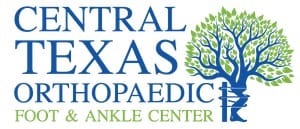Common Diagnoses:
Tarsometatarsal Arthritis
What is Tarsometatarsal Arthritis?
Tarsometatarsal (TMT) arthritis, also known as midfoot arthritis, can significantly impact mobility and quality of life. This condition affects the joints connecting your hindfoot to your forefoot, leading to pain, instability, and difficulty with everyday activities. If you’re experiencing persistent midfoot pain, understanding this condition is crucial.
What Causes Tarsometatarsal Arthritis?
While several factors can contribute to TMT arthritis, these are some of the most common:
Previous Injury: A past foot injury, such as a sprain, fracture, or Lisfranc injury, can disrupt the joint’s structure and increase the risk of arthritis developing over time. This is known as post-traumatic arthritis.
Wear and Tear: Years of repetitive stress and use can gradually wear down the cartilage in the tarsometatarsal joints, leading to osteoarthritis. This is more common in very active individuals who participate in high-impact sports.
Inflammatory Conditions: Underlying inflammatory conditions like rheumatoid arthritis can also affect the tarsometatarsal joints.
Recognizing the Symptoms
TMT arthritis often presents with a combination of the following symptoms:
Pain: Pain in the midfoot is the most common symptom, often worsening with activity or prolonged standing.
Swelling: You may notice swelling on the top of your foot in the affected area.
Stiffness: Limited range of motion and difficulty moving your foot normally.
Instability: A feeling of looseness or giving way in the midfoot, especially on uneven surfaces.
Deformity: In advanced cases, the arch of your foot may flatten, or the front of your foot may turn outward.
How is Tarsometatarsal Arthritis Diagnosed?
Accurate diagnosis is crucial for effective treatment. Diagnosing tarsometatarsal (TMT) arthritis involves a comprehensive approach to pinpoint the source of your midfoot pain and instability. Your podiatrist will begin by discussing your symptoms and medical history, including any previous injuries. Your foot and ankle specialist will conduct a thorough evaluation, including:
Physical Exam: Assessing your foot’s range of motion, stability, and pain points.
Imaging Studies: X-rays are essential to visualize the joint and assess the extent of damage. Sometimes, a CT scan or MRI may be used to get a more detailed view.
Tarsometatarsal Arthritis Treatment Options:
Non-surgical Options:
Activity Modification: Adjusting your activities to reduce stress on the affected joint.
Immobilization: Wearing a brace or cast to restrict movement and allow the joint to rest.
Medications: Over-the-counter pain relievers, NSAIDs, or prescription medications to manage pain and inflammation.
Orthotics: Custom orthotics or supportive shoe inserts can help stabilize the foot and reduce pressure on the joint.
Physical Therapy: Exercises and stretches to improve strength, flexibility, and range of motion.
Injections: Corticosteroid injections can provide temporary pain relief and reduce inflammation.
Surgical Options:
When conservative treatments fail to provide adequate relief, surgery may be considered. The most common surgical procedures for TMT arthritis include:
Arthrodesis (Fusion): This procedure involves fusing the bones of the affected joint together to eliminate pain and provide stability.
Arthroplasty (Joint Replacement): A joint replacement may be an option in some cases, although it is less common for TMT arthritis.
Don’t Let Midfoot Pain Hold You Back
If you’re experiencing persistent midfoot pain, don’t hesitate to seek professional help. Early diagnosis and treatment can help prevent further joint damage and improve your overall foot health. Ready to find relief? Contact CTX Foot & Ankle today. Call (254) 313-9559 or Click Here to Request an Appointment Now!

